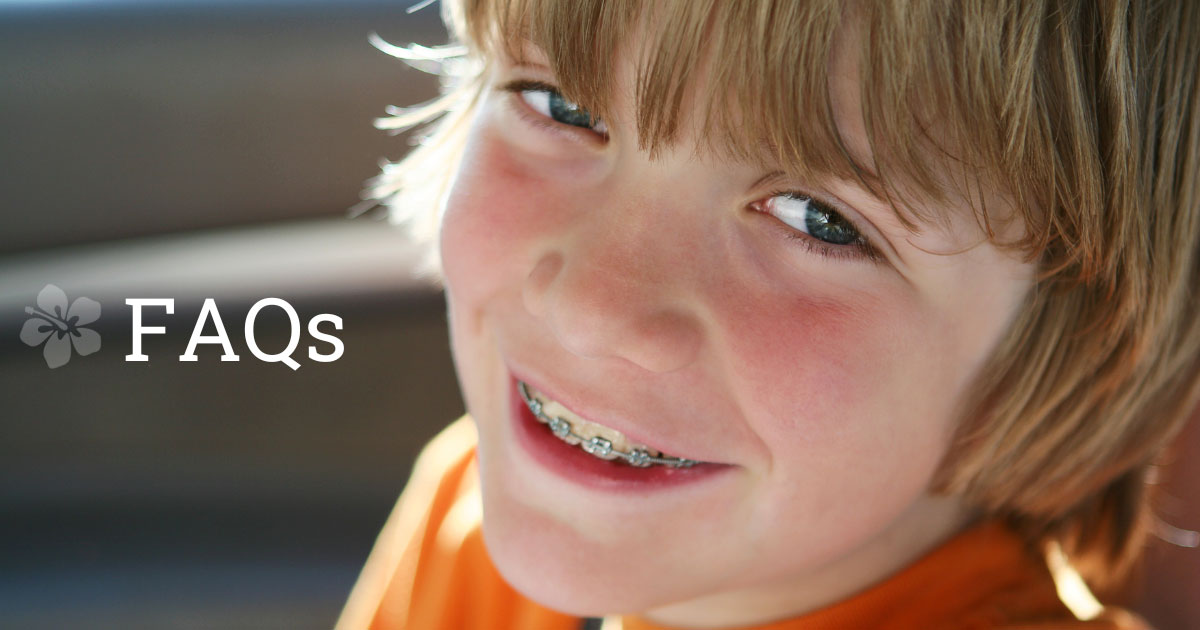Braces can provide all sorts of wonderful benefits for your teeth, from correcting an overbite, underbite, or crossbite to addressing gaps and speech impediments. If you believe your child may need braces, one of the most pressing questions is regarding the best age to get them.
It’s important to know that every mouth is different, so there is no precise time that your child should begin the braces process. Still, according to the American Association of Orthodontists, your child should visit your orthodontist for the first time when they are around seven years old. After the initial visit, the best age to get braces is typically between 10 and 14 years old.
Let’s learn more about this guideline.
Why Is the Best Age for Braces Between 10 and 14?

The pre-teen years are full of changes, and these years provide a unique opportunity for effective orthodontic treatment. There are several reasons that the period between the ages of 10 and 14 is typically the best time for a child to get braces. Here are some of the most significant.
Early Intervention Can Prevent Future Problems
One of the most important benefits of having your child fit with braces when they are young is that the treatment can work to prevent other or more extensive oral problems down the line. For example, braces can help guide your child’s jaw as it grows, which can help make sure their adult teeth come in straight. If these teeth do not come in properly, your child may develop painful issues with their teeth later in life that require a lot of time and money to repair.
Between the ages of 10 and 14, your child has most adult teeth in place, but their teeth, jaw, and soft tissue are not as dense as those of a fully grown adult, so they require less pressure to reposition. In addition, with the mix of baby teeth and adult teeth in this age range, your orthodontist has the clearest picture of your child’s tooth alignment and what issues might need to be corrected.
Braces Can Fix Bite Problems
There are several bite problems that your child might encounter that can be addressed with braces before adulthood:
- Crossbites – In crossbite cases, your child’s teeth are misaligned as a group, either in the front or the back. As a result, some or all of the top teeth close behind their bottom teeth.
- Overbites – Overbites occur when your child’s top teeth are too far in front of their bottom teeth. An overbite can be vertical or horizontal and cause dental hygiene and bite complications as well as aesthetic issues.
- Underbites – An underbite is when your child’s bottom teeth cover their top teeth when their mouth is closed. Underbites can cause many of the same issues as overbites.
Misalignments and bite problems can cause pain, tooth decay, insecurity, and other future dental problems as your child continues to grow. Getting braces early can help take care of these issues as the braces move your child’s teeth into position before adulthood begins.
Braces Can Address Shifting and Spacing Issues
Issues with spacing are quite common when children are young. For instance, they might have too much space in the mouth or not enough space in the mouth, which can cause shifting or crowding. Isolated gaps in the mouth can cause issues with oral hygiene and create tooth and gum decay issues. Getting your child braces when they are young can help resolve such spacing issues before serious complications occur.
Braces Can Address Issues Related to Thumb Sucking and Other Habits
A child’s jawbones have not been fused together the way that adult jawbones are. As a result, actions like thumb sucking can add pressure that changes the shape of your child’s mouth and affect tooth alignment. Without even realizing it, your child might create problems with their bite, the spacing of their teeth, their jaw, and more. If you take your child to an orthodontist early enough, treatment can help prevent damage and future problems, as well as help identify and put a stop to the root cause of the issue.
Braces Can Have Positive Health and Psychosocial Benefits
In early adolescence, children often struggle with developing self-confidence. In particular, if your child has issues with bite or spacing, they might be insecure about their smile. Getting braces at an early age allows for quick, effective repositioning that leaves them with a straighter smile. Not only will they be more confident, but a straighter smile can make it easier for them to maintain their oral hygiene in their busy teenage years. This reduces the risk of dental issues down the line, such as cavities and infected gums.
Orthodontic Intervention Can Widen the Jaw
Between the ages of 10 and 14, your child’s jawbone is still malleable and responsive to adjustment, but most adult teeth have emerged. If your child has a maxillar constriction, a narrow upper jaw, they may also have a host of issues like crossbites and crowded teeth. Bringing your child to the orthodontist when they are young can help you identify whether a palate expander is necessary to widen your child’s upper jaw.
What Is a Palate Expander?
If your child needs a wider upper jaw, you should consult with your orthodontist about whether a palate expander may be necessary. A palate expander is a customized orthodontic device that your orthodontist will position on the roof of your child’s mouth. Over time, your child’s jawbone will widen, making more room in their mouth.
There are several types of palate expanders, and the type that your child will need will depend on what your orthodontist observes in your consultation. Your orthodontist may consider:
- A rapid palate expander – Attached to the back of the teeth, this type of palate expander is designed for quick jaw expansion. This palate expander option has a screw mechanism in the middle to gently expand the device and the child’s palate (the arch in the roof of the mouth) and jaw.
- A removable palate expander – If your child only needs to have the jaw widened a small amount, they might need a removable expander. These are typically made from chrome and feature an adjustable screw mechanism.
- A surgically assisted rapid palate expander – If a patient needs significant expansion and non-surgical methods alone are not sufficient to get it done, the orthodontist might recommend surgically assisted rapid palate expansion (SARPE). These are typically used in adults only, as their facial bones are fully developed.
- An implant-supported palate expander – Similar to SARPEs, implant-supported palate expanders are also usually done in teens or grown adults. A periodontist or surgeon will place the dental implants while your orthodontist places the expander.
Braces FAQs

Now that we have established that the best time to get braces is typically between the ages of 10 and 14, you might still have other questions about treatment with braces.
Here are some of our top FAQs:
In some cases, you might take your child to get a consultation only to find out that your orthodontist recommends that you wait to get your child’s orthodontic treatment. It all depends on the growth of your child’s teeth, mouth, and jaw and what issues braces would address. If your child does start the braces journey, it’s best to reassure them that a few months of braces can mean a lifetime of beautiful smiles.
If you are interested in correcting your smile and addressing issues with your bite or spacing, you should get in touch with an experienced orthodontist to evaluate whether braces or other orthodontic treatments are right for your smile.
- Maintaining spacing between teeth
- Providing functional appliances for jaw growth
- Addressing palate conditions
The orthodontist might not even see an immediate need for treatment, thus giving you the peace of mind that your child’s teeth are developing as they should be. However, regular appointments are still a good idea. They allow the orthodontist to find potential issues early, making them easier and faster to correct.
Start Your Child’s Orthodontic Journey With Robison Orthodontics

Taking your child to see an orthodontist when they are young can prevent a variety of complex dental issues later in life. If your child is seven years of age or older, you should get in touch with an orthodontist who can evaluate their teeth and determine if treatments such as braces and palate expanders are necessary.
Our experienced team at Robison Orthodontics is happy to assist you as you begin the orthodontic treatment process with your child. We pride ourselves on our comfortable office environment, and the innovative technologies that help us give our patients smiles they are proud of.
To learn more about how we can help you or to schedule your consultation, contact our office today.

Dr. Tyler Robison is an alum of Mesa’s Mountain View High School. He graduated from Brigham Young University before being accepted to the “Top Ten-nationally ranked” University of Louisville in Kentucky, where he earned his Doctorate in Dental Medicine and a Master’s Degree in Oral Biology. He graduated with honors in the top ten percent of his class. Dr. Robison continued at the University of the Pacific in San Francisco, where he received a second master’s degree in dental science and his orthodontic certification.


